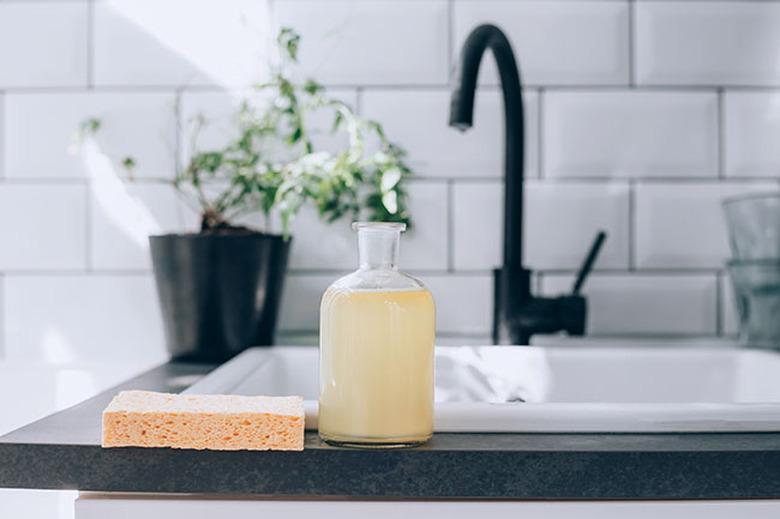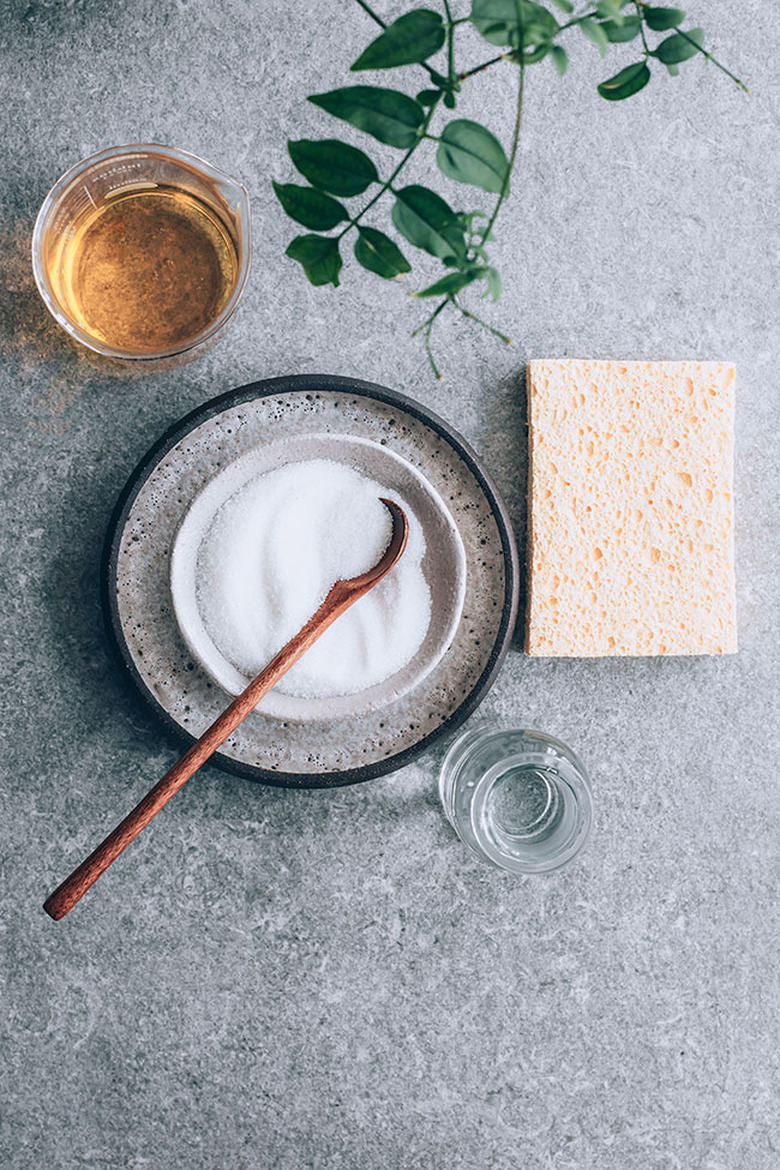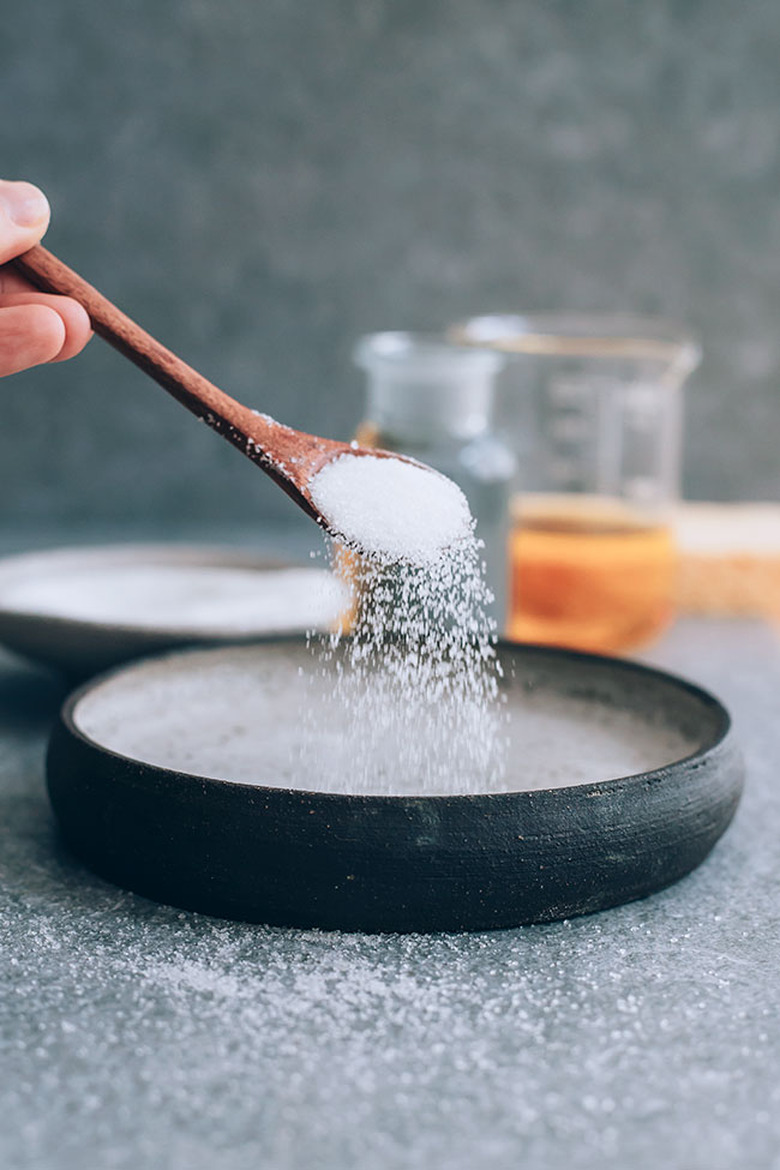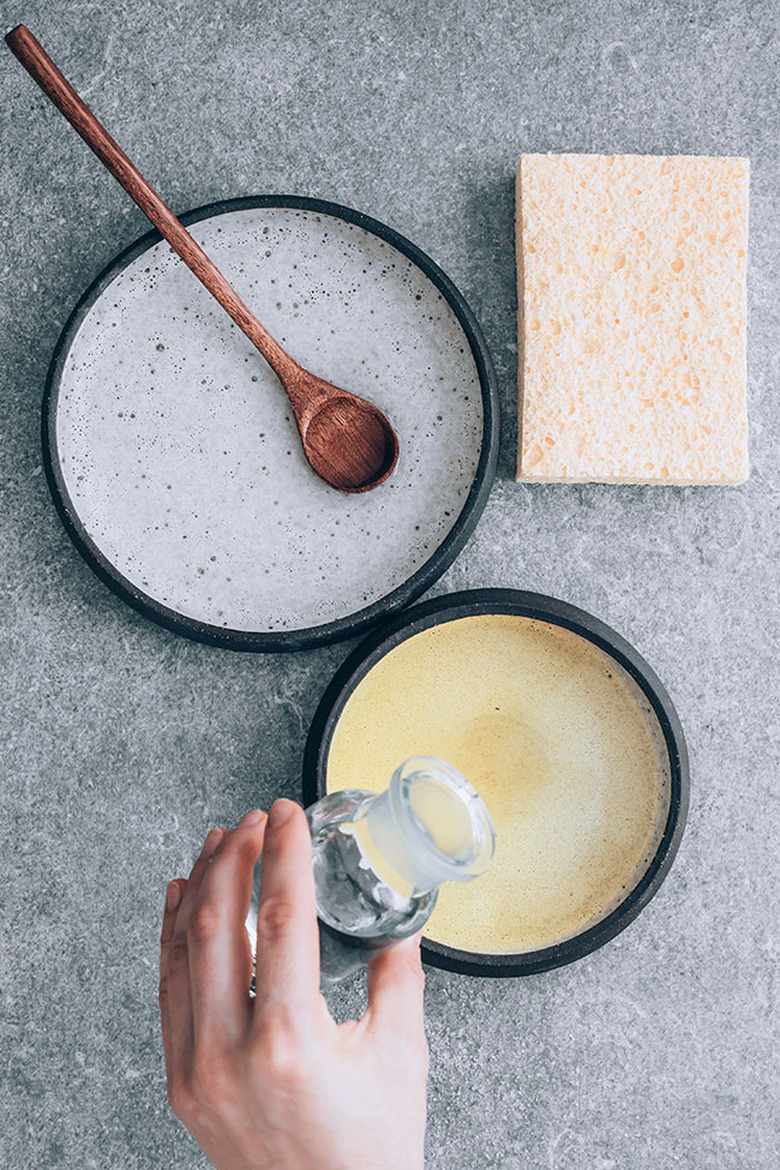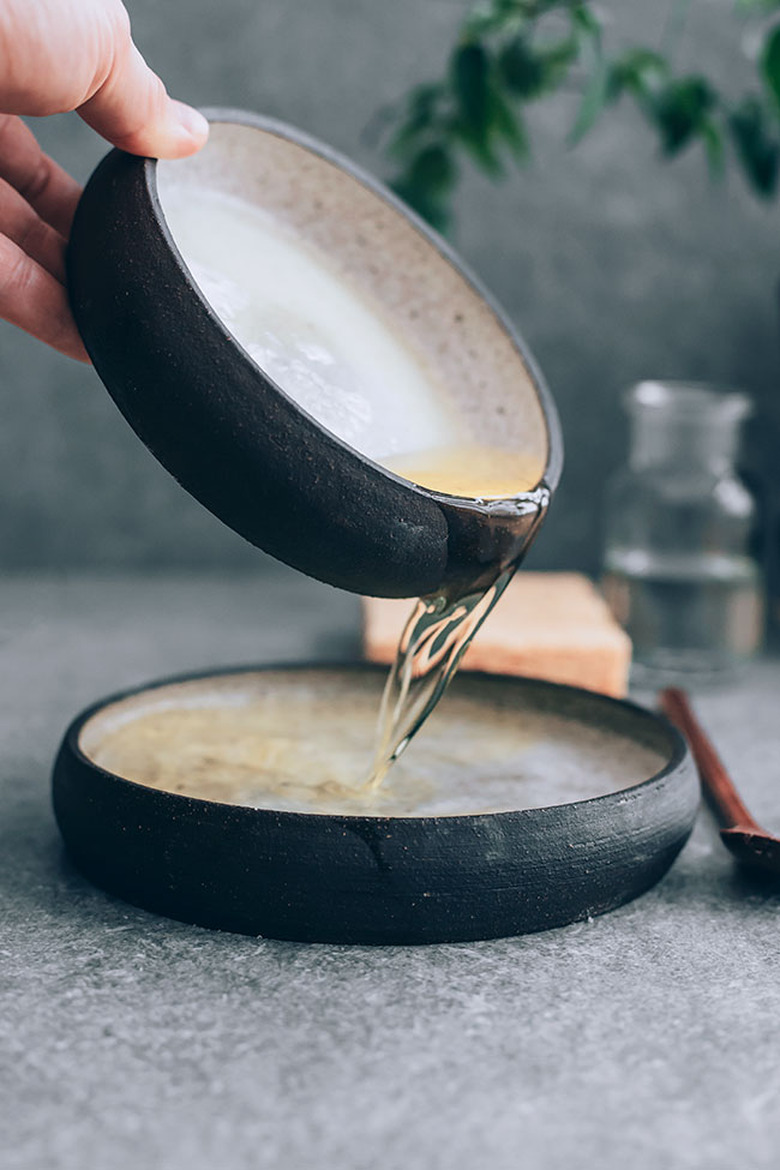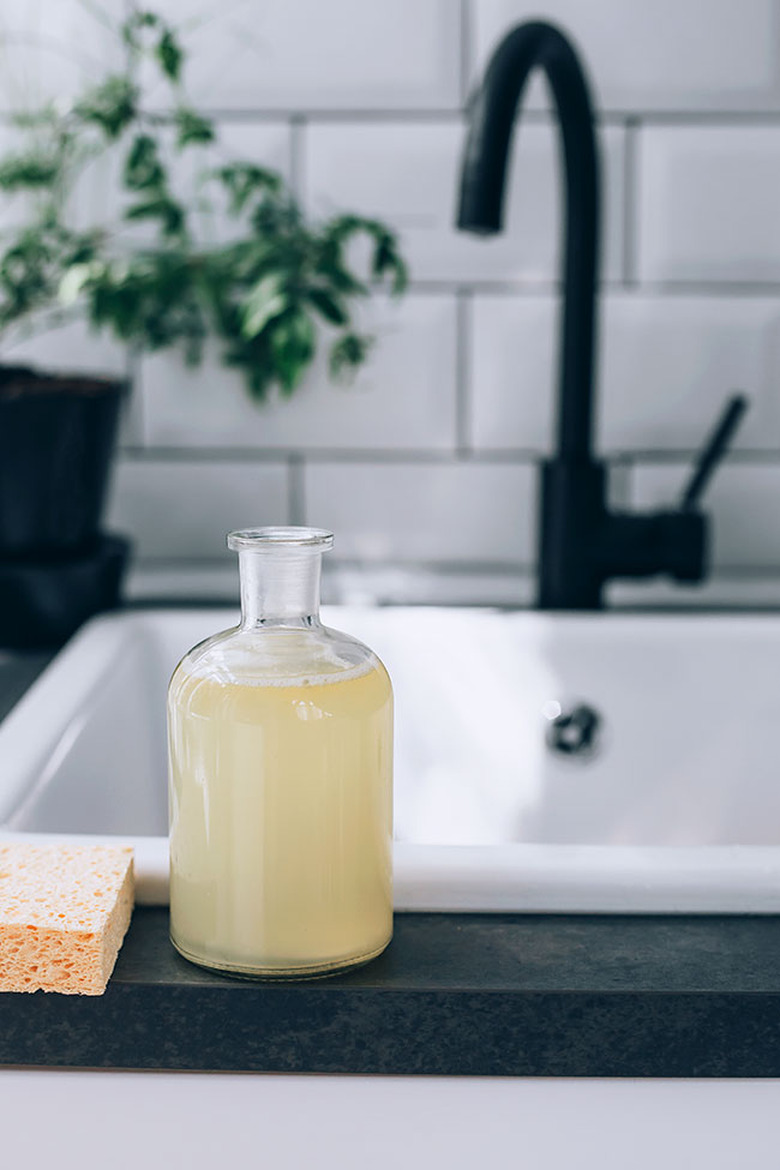DIY Dish Soap That Actually Works
Washing dishes might not be your favorite chore, but this homemade dish soap will make the task much more pleasant. If you've been disappointed by other DIY soap recipes, keep reading, because this recipe truly works. And you only need four ingredients!
Many dish soap recipes use Castile soap. While the gentle soap works well as a body wash or for other smaller cleaning jobs, Castile soap just doesn't have the oomph to wash a sink full of dishes. And it can leave behind a filmy residue. This recipe uses the lesser known Dr. Bronner's product, Sal Suds. Made with plant-based surfactants, natural fir needle, and spruce essential oils, this all-purpose cleaner is much more concentrated than Castile soap. You'll get loads of cleaning power — and lots of bubbles — without any synthetic dyes or fragrances.
Things Needed
-
Warm filtered water, 1/2 cup
-
White distilled vinegar, 1/2 cup
-
Dr. Bronner's Sal Suds, 1/2 cup
-
Kosher salt, 2 teaspoons
-
Squeeze bottle or other storage container
Step 1
Step 1
Sal Suds is very concentrated and needs to be diluted. This recipe uses one part cleaner to two parts dilution (water and vinegar). Combine the water and salt first, because salt is the secret to getting the thick consistency of traditional dish soaps. If you don't have kosher salt, sea salt works as well.
In a medium size bowl, add warm water. Tap water can contain minerals that interfere with the thickening process so use filtered water instead. Add salt and stir until it is completely dissolved.
Step 2
Step 2
In a separate bowl, combine the Sal Suds and vinegar. Stir gently until fully combined.
TIP: Lots of homemade dish soap recipes call for the combination of vinegar and Castile soap. Both are great all-purpose cleaners, but they should not be combined together. The vinegar (an acid) and Castile soap (a base) react when mixed together, causing the soap to 'unsaponify,' which basically means the soap is no longer a soap. You're left with a curdled-looking mixture with even less cleaning power. If you want to use them together, clean first with Castile soap and then rinse with vinegar.
Step 3
Step 3
Pour the Sal Suds and vinegar mixture into the bowl with the salt water. Stir gently to avoid making tons of bubbles, but keep mixing until the soap has thickened. It will reach a hair gel-like consistency.
TIP: After this step, you can add essential oils to the recipe if you'd like. Use 25 drops of lavender for a more zen-like washing experience or lemon for additional grease-cutting power. If you used sea salt instead of kosher salt do not add essential oil or the soap will turn runny again.
Step 4
Step 4
Pour the mixture slowly into a soap dispenser or bottle. A pump dispenser does work with the soap's thicker consistency, but a squirt bottle makes it easier to dispense (a recycled dish soap container works well). Add a small amount of soap to running water and start washing!
